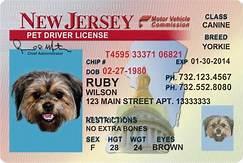How Can I Get Pet Insurance?
Pets are a part of our families, and we want to make sure they're healthy and happy. Pet insurance can help you cover the cost of unexpected veterinary expenses, giving you peace of mind knowing that your furry friend is taken care of.

What is Pet Insurance?
Pet insurance is a type of insurance that covers the cost of veterinary care for your pet. It can be used to cover a variety of expenses, including:
- Accidents
- Illnesses
- Prescription medications
- Surgery
- Hospitalization
How Does Pet Insurance Work?
Pet insurance typically works on a reimbursement basis. This means that you pay for your pet's veterinary care upfront, and then file a claim with your insurance company for reimbursement. The amount of reimbursement you receive will depend on the terms of your policy.
How Much Does Pet Insurance Cost?
The cost of pet insurance varies depending on a number of factors, including the type of pet, the age of the pet, and the coverage level you choose. However, you can expect to pay anywhere from $10 to $100 per month for pet insurance.
What Are the Benefits of Pet Insurance?
There are many benefits to pet insurance, including:
- Peace of mind knowing that your pet is covered in case of an emergency.
- Financial protection from unexpected veterinary expenses.
- The ability to choose the veterinarian of your choice.
- Coverage for a variety of expenses, including accidents, illnesses, and prescription medications.
How Can I Get Pet Insurance?
There are a few different ways to get pet insurance:
- Through your veterinarian. Many veterinarians offer pet insurance plans to their clients.
- Online. There are a number of websites that allow you to compare pet insurance plans and purchase a policy online.
- Through a pet insurance company. There are a number of pet insurance companies that offer a variety of plans to choose from.
What Should I Look for in a Pet Insurance Policy?
When shopping for a pet insurance policy, there are a few things you should keep in mind:
- Coverage level. Make sure the policy you choose covers the expenses that you're most concerned about.
- Reimbursement rate. The reimbursement rate is the percentage of your veterinary expenses that the insurance company will reimburse you for.
- Deductible. The deductible is the amount of money that you have to pay out of pocket before the insurance company will start to reimburse you.
- Waiting period. The waiting period is the amount of time that you have to wait before the insurance company will start to cover your pet's expenses.
Conclusion
Pet insurance can be a valuable way to protect your pet and your finances. By carefully comparing policies and choosing the right one for your needs, you can ensure that your furry friend is always taken care of.
Declaration: All article resources on this website, unless otherwise specified or labeled, are collected from online resources. If the content on this website infringes on the legitimate rights and interests of the original author, you can contact this website to delete it.





